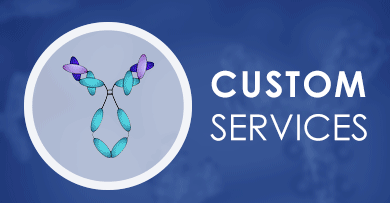+ Filter
 Loading...
Loading...

CEA & nido-carboranes
 Loading...
Loading...Anti-CEA & nido-carboranes ProductsBackground
Anti-CEA & nido-carboranes Products
-
- Species Reactivity: Human
- Type: Camel VHH
- Application: ELISA
-
- Derivation: Phage Display Library
- Species Reactivity: Human
- Type: Dromedary VHH
- Application: ELISA
-
- Derivation: Phage Display Library
- Species Reactivity: Human
- Type: Dromedary VHH
- Application: ELISA
- Camelid Anti-CEA Recombinant Single Domain Antibody (HPAB-0698-YJ-VHH) (HPAB-0698-YJ-VHH)
-
- Derivation: Phage display library
- Species Reactivity: Human
- Type: Camelid VHH
- Application: ELISA, FC, In vivo staining
- Camelid Anti-CEA Recombinant Single Domain Antibody (HPAB-0699-YJ-VHH) (HPAB-0699-YJ-VHH)
-
- Derivation: Phage display library
- Species Reactivity: Human
- Type: Camelid VHH
- Application: ELISA, FC, In vivo staining
View More Products
Can't find the products you're looking for? Try to filter in the left sidebar.Filter By Tag
More Infomation
Our customer service representatives are available 24 hours a day, from Monday to Sunday. Contact Us
For Research Use Only. Not For Clinical Use.
Background
A carborane is a cluster composed of boron, carbon and hydrogen atoms. Like many of the related boranes, these clusters are polyhedra and are similarly classified as closo-, nido-, arachno-, hypho-, etc. based on whether they represent a complete (closo-) polyhedron, or a polyhedron that is missing one (nido-), two (arachno-), or more vertices. Boron neutron capture therapy is a binary form of cancer treatment.
Carcinoembryonic antigen (CEA) describes a set of highly related glycoproteins involved in cell adhesion. CEA is normally produced in gastrointestinal tissue during fetal development, but the production stops before birth. Therefore, CEA is usually present only at very low levels in the blood of healthy adults.


